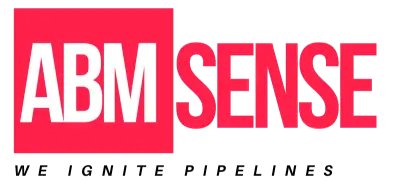How to Build a High-Converting Landing Page for Demand Gen?
In the realm of demand generation, landing pages are of utmost importance. When properly optimized, these pages can achieve conversion rates as lofty as 30 percent. Clearly, then, any business interested in amping up its lead generation and, by extension, its sales ought to be well-versed in the art and science of building high-converting landing pages.
Understanding Your Audience
To create a high-converting landing page, you first need to know your target customer. That means delving into the delightful world of research to uncover their behaviors, preferences, and pain points. Calls-to-action that are personalized perform 42% better than their generic counterparts, according to a report from HubSpot. And when it comes to understanding your audience, there really is no better tool than a good old-fashioned research study.
- Create buyer personas that provide demographic and psychographic details.
- Pinpoint principal problems that your product or service can resolve.
- Employ instruments such as Google Analytics to collect information concerning the people visiting a site.
In addition, gaining insight into user behavior through A/B testing can further hone what you’re doing. This involves taking your landing page and creating two different versions of it, which you run simultaneously to see which one performs better. A rigorously tested page will convert better than one that hasn’t gone through that process.
Essential Elements of a High-Converting Landing Page
Building a high-converting landing page for demand generation includes knowing the requisite parts that need to be there. These parts work together to make an it-just-works page that creates an experience that’s inviting and persuasive enough to convert your visitor into a lead.
- A Powerful Headline: Your headline is the first thing that greets the visitors. Ensure it carries weight. A study demonstrated that numbers in headlines generate 73% more engagement.
- Unambiguous Call-to-Action: Your CTA ought to be very much seen and makes one want to act. The use of verbs and the manufacture of a sense of urgency can considerably boost one’s conversion rate.
- Visual Components: Employ pictures or films that connect with your viewers. For instance, using customer endorsements or visual representations of your item can extraordinarily strengthen the message you’re trying to communicate.
What is it that makes a website trustworthy?
- Trust indicators: Include proof of trust, like client logos, reviews, and testimonials. 75% of consumers trust online reviews as much as personal recommendations.
- Content: Make your content clear and to the point. Keep it simple. The same study showed that the pages with minimal text but clear context converted better than those with more text, regardless of how “rich” they were with detail.
Optimizing for Mobile and Load Speed
Today, in the rapidly advancing era of digital media, there’s no escaping mobile optimization. For example, the mobile web accounts for over 54% of internet traffic, and yet a staggering 83% of landing pages fail Google’s mobile-friendliness test (which affects SEO rankings). Not only this, but there’s a more apparent, actual connection between how fast a page loads on mobile (or desktop) and conversions; decreasing mobile page load speed from 15 seconds to 5 seconds can boost conversions by 100% in this graphic’s example.
- Employ responsive design to guarantee that all devices are compatible.
- Decrease the sizes of images and optimize assets to improve loading times.
- Identify and remediate bottlenecks by regularly testing speeds.
Also, think about the user experience on mobile; it is absolutely necessary that touch targets are sufficient in size to accommodate fingers of all shapes and sizes. It should be easy to tap a button, and it should be easy to make your way through a form when working on a very constrained screen.
Measuring and Analyzing Performance
When your landing page goes live, it is imperative to keep tabs on its performance. This is done by implementing something like Google Analytics or heatmap software. And then, obviously, you have to purposefully act on the knowledge these tools provide. Segue into the next section with some mention of metrics guiding iterative improvements, if you want.
- Keep track of measurements like bounce rate, time on page, and conversion rate.
- Collect qualitative responses using surveys or chatbots to understand user experiences.
- Periodically enhance and refresh your content, using performance data to inform your decisions.
The more you know about user behavior and preferences, the better you can design your landing page to have the maximum impact.
Final Thoughts
To sum up, building a high-converting landing page for demand generation requires a strategic mix of audience understanding, key elements, optimization, and analysis. When these practices are implemented, businesses are able to increase their conversion rates and push more qualified leads into their sales funnels.
Ultimately, your landing page’s success relies on continuous testing and optimization. If you take a proactive approach, your landing page can constantly evolve to meet your audience’s needs.
Explore More on us
Discover insightful blogs on our Blogging Space, check our WordPress Visitor Identification Plugin, and learn more about Account-Based Marketing.


